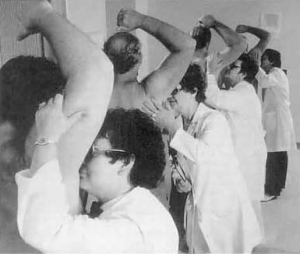
Last night, I watched a reality dating show with a seemingly wacky way of finding true love. The male searching for love sniffed the armpits of potential females. He either turned away in disgust or became quite aroused by the wafts of underarm aroma. What is so comical is that a new dating service relies on a more sterile but ultimately similar approach. Scientific Match, which opened last December, provides dating services based on both personality and DNA compatibility. Clients send in a cheek swab of DNA to be matched up with a potential mate who has dissimilar DNA.
Attraction based on dissimilar DNA was first studied in 1995 by Claus Wedekind. The study is referred to as the "Sweaty T-Shirt Experiment." In the study, women were given t-shirts recently worn by men. The men in the study were not allowed to wear any cologne or scent that would mask their natural scent. The women were then asked to rate how "sexy" the t-shirts smelled to them. Correlation was found between how good the shirts smelled to the women and how dissimilar their immune DNA was to the man in question. Following this approach, Scientific Match matches clients based on chemistry, specifically making sure six immune genes of each male and female do not match.
But why would it be advantageous to be attracted to someone with dissimilar DNA? Scientifically speaking, it increases the robustness of the species by providing genetic diversity in a gene pool. Diversity enables survival in intense bouts of environmental and infectious selection. There is more of a chance that an individual will have the adaptation to survive and propagate in the population and pass on the advantageous trait. Similar DNA creates a bottleneck in the gene pool because similar genes are passed down rather than diversified - this is the case with inbreeding.
However, basing attraction on chemistry has its drawbacks. Women who are on birth control are turned away from Scientific Match because findings have reported that they are attracted to men with similar immune system genes. Birth controls works by tricking the body in believing it is pregnant. Studies have shown this also changes the indication of genes making women more attracted to family members than potential mates. This behavior has been seen in other mammals and is thought to be a way of protecting a pregnant member of the family and its offspring from harm.
